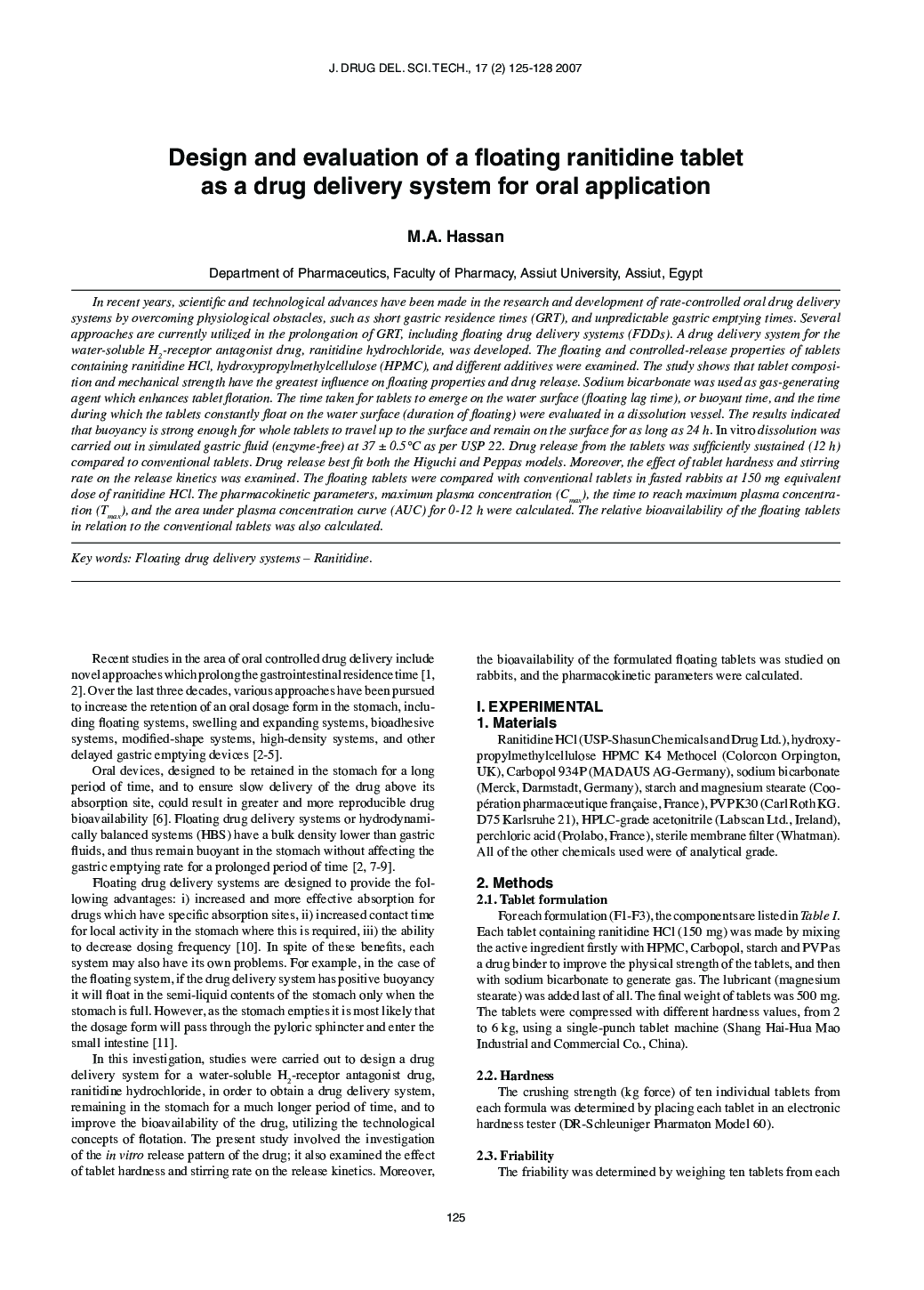| Article ID | Journal | Published Year | Pages | File Type |
|---|---|---|---|---|
| 2483822 | Journal of Drug Delivery Science and Technology | 2007 | 4 Pages |
In recent years, scientific and technological advances have been made in the research and development of rate-controlled oral drug delivery systems by overcoming physiological obstacles, such as short gastric residence times (GRT), and unpredictable gastric emptying times. Several approaches are currently utilized in the prolongation of GRT, including floating drug delivery systems (FDDs). A drug delivery system for the water-soluble H2-receptor antagonist drug, ranitidine hydrochloride, was developed. The floating and controlled-release properties of tablets containing ranitidine HCl, hydroxypropylmethylcellulose (HPMC), and different additives were examined. The study shows that tablet composition and mechanical strength have the greatest influence on floating properties and drug release. Sodium bicarbonate was used as gas-generating agent which enhances tablet flotation. The time taken for tablets to emerge on the water surface (floating lag time), or buoyant time, and the time during which the tablets constantly float on the water surface (duration of floating) were evaluated in a dissolution vessel. The results indicated that buoyancy is strong enough for whole tablets to travel up to the surface and remain on the surface for as long as 24 h. In vitro dissolution was carried out in simulated gastric fluid (enzyme-free) at 37 ± 0.5°C as per USP 22. Drug release from the tablets was sufficiently sustained (12 h) compared to conventional tablets. Drug release best fit both the Higuchi and Peppas models. Moreover, the effect of tablet hardness and stirring rate on the release kinetics was examined. The floating tablets were compared with conventional tablets in fasted rabbits at 150 mg equivalent dose of ranitidine HCl. The pharmacokinetic parameters, maximum plasma concentration (Cmax), the time to reach maximum plasma concentration (Tmax), and the area under plasma concentration curve (AUC) for 0-12 h were calculated. The relative bioavailability of the floating tablets in relation to the conventional tablets was also calculated.
